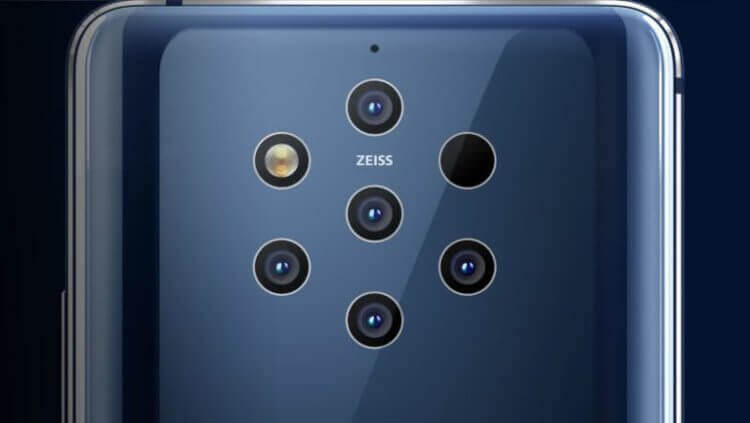The cameras of modern smartphones have reached the point where they can be called almost perfect. They shoot perfectly, fit into a slim body and are always at hand. That is why mobile photography has exploded lately, and the camera that has the most pictures in the world is the one built into iPhone. Of course, they are inferior in quality to serious DSLRs and system cameras, especially in low light, but the vast majority of users have more than enough photographic capabilities of a smartphone. Due to the fact that the level of cameras has risen very high, manufacturers need to surprise with something else. Because of this, the most useless functions often appear.

What's unnecessary in a smartphone camera?
Extra functions of the phone camera
You don't even have to think long to understand which camera functions are useless. You just need to open the corresponding application on your smartphone and everything will become clear immediately. If you find something that you do not use and have not even heard about it, then the function was simply added due to the fact that the manufacturer thought it was not difficult to make it and let it be. If you do not use it, but at the presentation they talked about this function, then it is needed in order to sell a smartphone.
Document scanner
I will not argue with the fact that a document scanner for a smartphone is very convenient. I myself use such applications all the time. I even sometimes use a smartphone scanner, being next to the printer, which has its own scanning module. It's more convenient that way, especially if you need to send a scanned file to someone.
Even so, I still find document scanners in a smartphone a useless feature. As a rule, these scanners are so flawed that you just don't want to use them. They do not provide any functionality for working with documents. Often it is not even possible to conveniently crop the picture so that the sheet is even.

The scanner function in a smartphone is very useful, but it is better to entrust it to third-party applications ..
Much easier to download a separate application. Even among the free options, almost all offer a lot more options, including their own storage (separating documents from everything else is very convenient). On Google Play and the AppStore, you can find many options for the request “scanner”. It's up to you, but built-in scanners are mostly just the bottom.
Macro shooting on a smartphone
That's why you need a macro in a smartphone? How often do you shoot from a distance of 4-5 centimeters? Beautiful macro shots do look very attractive, but they are not needed by smartphone owners for one simple reason.
Manufacturers understand that the user will need a macromodule about one and a half times for the entire time of owning a smartphone. Therefore, using a good sensor, which is expensive, is simply unprofitable. The smartphone will also rise in price and it will be much more difficult to sell it.
If it is possible to somehow go to increase the price, then physics will be more difficult. A large sensor requires many optical elements. This will increase the thickness and the camera will bulge even more. This is definitely not what users want.

It looks very cool, but you can't shoot with any module on a smartphone.
As a result, a macromodule with a resolution of 2 megapixels is installed in smartphones, which simply focuses at a short distance. It is much easier to take a picture on the main module with a resolution of 48 megapixels and just crop it. The result will be even better, but still it will be far from what you can shoot with a professional camera. Therefore, you should not entertain yourself with illusions about beautiful macro photographs and be led by promises (read “divorce”) from manufacturers.
Phones with multiple cameras
Since Apple released iPhone 7 Plus, it has become a tradition to chase the number of modules. Sometimes it's really cool when you are given a regular module, a shirik and a small 2x or 3x increase. But sometimes manufacturers start using too many modules, which make no sense.

Why is this?
What surprises me the most is the use of low resolution zoom modules. Again, I would like to ask, is it not easier for me to take a picture on the main module with a resolution of 48 megapixels and triple it, instead of carrying around a 3x zoom with an 8 megapixel sensor? It's easier for me, but not for the manufacturer, because “digital zoom” does not sound as cool as “optical zoom”.
Depth camera
The depth sensor is also more like a divorce, at least for now. I have not seen a smartphone in which this sensor works so well that I understand that the money is well spent.
In the end, the Google Pixel took great pictures (including portraits) even with one module many years ago. Perhaps the depth sensor will someday start to work better, but so far there isn't much point in that.
Super slow motion
I sometimes shoot video at 120 or 240 frames per second. It looks good, and most importantly, you can shoot long events this way. For example, how a child frolics in the pool or how a dog jumps in the snow.
The camera even at 960 frames per second allows you to capture only an event that lasts less than a second, and after slowing down turns into six seconds. That is, to shoot a drop of water falling or a fountain of foam bursts out of the bottle, but this must be very well thought out. This is due to the fact that the smartphone's memory simply cannot quickly save such a video stream. For example, Sony uses a separate memory module directly on the camera sensor. Its write speed is 5 times faster than the built-in memory. It is there that the super slow motion is saved, and then transferred to the built-in memory.
At 7,680 frames per second, it's even more difficult. Of course, such a slowdown looks very cool, but there are not many such transient events. Take them off one time, and then? Moreover, the final video is of low quality, and often flickers. As a result, the function simply “gathers dust” in the bowels of the phone.
Most useful phone camera features
It seems to me that a smartphone camera should not have anything superfluous. It is enough that she just takes good photos and meets the needs of 95 percent of users who take out a smartphone, press a button and put it away.

The smartphone camera is already very complex to make it even more complicated.
This requires that the camera has good optics, a good sensor without the pursuit of resolution, and normal software. It is the software that processes information from the sensor and turns it into a finished image. For masterpieces, you need to buy serious cameras, and it is not at all logical to overpay for marketing and extra functions that many do not use.
